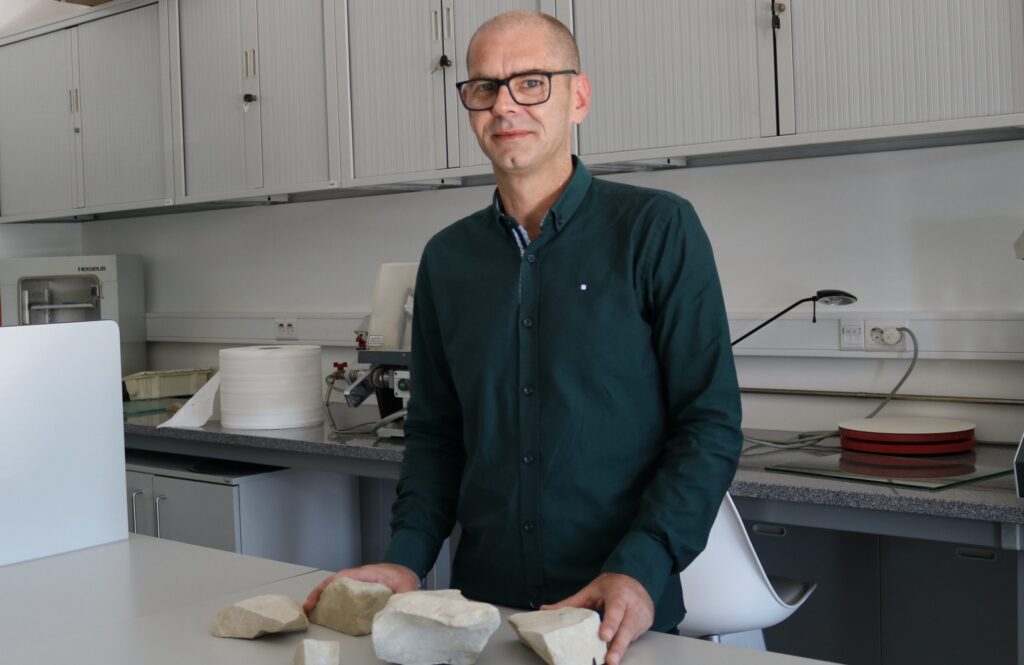A new international study, led by researcher Eric Font, from the University of Coimbra (UC), confirms the thesis that giant volcanic eruptions contributed to the mass extinction of the dinosaurs.
This study, which also involved scientists from Germany, China and Switzerland, has just been published in the prestigious scientific journal Geology and promises to rekindle the debate in the scientific community.
The cause of the mass extinction of terrestrial and marine species, including dinosaurs, in the Cretaceous-Paleogene (K-Pg) period 66 million years ago has been a hotly debated topic among the international scientific community.
For several decades the theory prevailed that it was the impact of a meteorite (the Chicxulub) on Earth that caused the mass extinction of dinosaurs and other species. However, "at the same time (Cretaceous-Paleogene) there were gigantic volcanic eruptions in the magmatic (volcanic) province of Deccan, in present-day India, which could have contributed also, or even mainly, to the mass extinction." account Eric Font.
However, the difficulty “in being able to accurately date the eruptions that occurred on the continent, through the paleontological record and the layer of iridium [a chemical element rare on Earth, but abundant in meteorites] essentially preserved in marine sediments, raised some questions, namely: did volcanism begin before (and may have contributed to) or after (and may not have contributed to) mass extinction? Did this volcanism have a global impact? What was its impact on the Earth's climate and terrestrial life?”, explains the researcher and professor at the Department of Earth Sciences of the Faculty of Science and Technology of the University of Coimbra (FCTUC).
In 2016, a study, also led by Eric Font's team, showed that Decão's volcanism started before the meteorite impact and remained during and after this impact.
The discovery was based on anomalous quantities of mercury (Hg) recorded in the marine sediments of Bidart, a French city, “where the sediments corresponding to the Cretaceous-Paleogene period are preserved. This outcrop is known worldwide for having preserved the famous iridium layer that was deposited by the meteorite (which supposedly killed the dinosaurs)».
«On Earth, mercury is an element produced essentially by anthropogenic activity or by volcanism. However, since the publication of our 2016 work, there has been a debate about the origin of this Hg, and meteorites can also contain significant amounts of Hg», says the FCTUC researcher.
To clear up the doubts, Eric Font's team has re-studied Bidart's marine sediments over the past three years, complementing the 2016 research and using new techniques (Hg isotopes) to identify the source of mercury. The results now published in Geology demonstrated a volcanic origin for this Hg, through its emission to the atmosphere and subsequent deposition of sediments.
The results obtained “confirm that the Deccan volcanic eruptions began before a meteorite collided with the Earth, before the death of the dinosaurs, and continued afterward. In other words, the Deccan volcanism may have been one of the main causes for the extinction of the dinosaurs», asserts Eric Font.
The Deccan “supervolcano” “clearly had a global effect. Whether the Chicxulub impact was the “drop of water that made the glass overflow” or it was an inconsequential event that occurred during an extinction that had already been caused by volcanism remains to be clarified”, the scientists say in the scientific article.
The scientific article can be consulted: here






















Comments